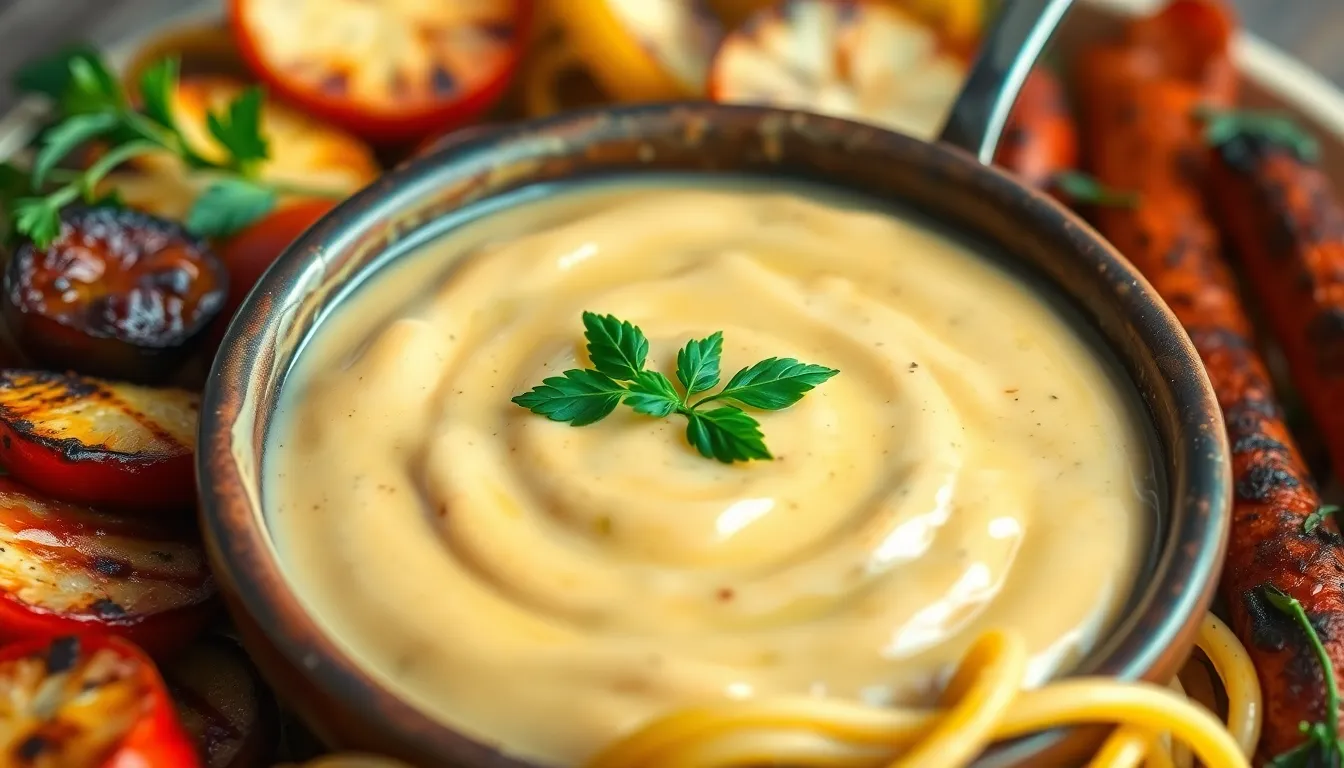
Zavagouda sauce is like that quirky friend who shows up at the party and steals the show. It’s bold creamy and a little tangy, making it the perfect companion for everything from grilled veggies to pasta. But what exactly should this sauce taste like? Imagine a delightful dance of flavors that tickle the taste buds and leave you craving more.
What Is Zavagouda Sauce?
Zavagouda sauce is a standout condiment known for its bold and creamy texture. This sauce provides a slight tanginess that elevates dishes. Many use it to enhance flavors in grilled vegetables, adding depth and richness. Pasta dishes benefit from Zavagouda sauce, creating an indulgent experience.
Ingredients typically include creamy elements like cheese or sour cream, combined with savory spices. A balance of flavors characterizes its profile, making it appealing to diverse palates. The tangy notes often come from vinegar or citrus, contributing to its unique taste.
Besides vegetables and pasta, Zavagouda pairs well with meats. Drizzling it over grilled chicken or beef can transform a regular meal into something exceptional. The versatility of this sauce means it can easily fit into various cuisines.
People appreciate Zavagouda for its crave-inducing qualities, ensuring it remains a favorite among many. Chefs often recommend it as a finishing touch, highlighting its ability to bring dishes to life. Its creamy mouthfeel, combined with the right amount of tang, leaves a lasting impression.
Zavagouda sauce captivates those who try it, providing a delicious addition to any meal. Culinary enthusiasts value its unique flavor and adaptability.
Flavor Profile of Zavagouda Sauce

Zavagouda sauce delivers a complex yet balanced flavor profile that enhances the culinary experience across various dishes.
Sweetness
Sweetness in Zavagouda sauce emerges subtly, often enhanced by the presence of ingredients like roasted garlic or caramelized onions. Natural sweetness complements the tangy elements, creating a rounded taste. Chefs may add a hint of honey or sugar to amplify this aspect. This gentle sweetness makes it approachable for those who prefer milder flavors, providing a harmonious counterbalance to sharper notes.
Savory Notes
Savory notes dominate the Zavagouda flavor landscape, driven by ingredients such as rich cheese or creamy sour cream. Umami flavors from ingredients like mushrooms or spices add depth, making the sauce intensely satisfying. The combination of savory components creates a rich mouthfeel that pairs beautifully with a variety of dishes, particularly grilled vegetables and pasta. Elevating the dish’s overall profile makes every bite an indulgently rich experience.
Spiciness
Spiciness in Zavagouda sauce varies but typically introduces a mild heat rather than overwhelming fire. Ingredients like fresh or dried peppers add this dimension without overshadowing other flavors. A balanced heat invites users to savor the sauce while still appreciating its creamy texture. Chefs often use this gentle spice to create intrigue in dishes, enhancing their appeal without alienating anyone sensitive to heat.
Common Ingredients in Zavagouda Sauce
Zavagouda sauce features a blend of key ingredients that contribute to its signature taste. These ingredients provide a creamy base and a delightful tang, making the sauce versatile for numerous dishes.
Base Ingredients
Cream or cheese serves as the foundation of Zavagouda sauce, delivering a rich and velvety texture. Sour cream, a popular choice, enhances the tanginess and creaminess. Some variations incorporate Greek yogurt, balancing health benefits with flavor. The sauce often includes roasted garlic, which adds depth and sweetness. Each component creates a harmonious blend that elevates the dish.
Seasonings and Spices
Seasonings play a crucial role in defining Zavagouda sauce’s flavor profile. A pinch of salt enhances the overall taste, while black pepper adds subtle heat. Fresh herbs such as basil or parsley bring brightness to the sauce. Garlic powder or onion powder serves as an alternative to fresh ingredients, maintaining flavor consistency. Smoked paprika sometimes finds its way into recipes, contributing a smoky nuance that complements the sauce perfectly.
Pairing Zavagouda Sauce with Dishes
Zavagouda sauce enhances the dining experience, working beautifully with a range of dishes. Its creamy texture and tangy flavor create memorable meals.
Best Food Pairings
Zavagouda pairs well with grilled meats, such as chicken or steak, as its richness complements the savory juices. Pasta dishes also shine with the addition of this sauce, creating a luxurious coating. Vegetables like roasted bell peppers and zucchini gain depth of flavor when dressed in Zavagouda. Seafood options, including grilled shrimp and baked fish, benefit from the sauce’s tangy notes, adding brightness. Even simple snacks, like crispy potato wedges, transform into gourmet bites when dipped in Zavagouda.
Cooking Techniques
Incorporating Zavagouda into cooking can elevate recipes quickly. Use it as a topping for baked potatoes, adding flavor and creaminess. Chefs can drizzle it over casseroles before baking, creating a rich, golden crust. Mixing Zavagouda directly into pasta during the last stage of cooking ensures even flavor distribution. Stirring the sauce into stir-fries can lend a delightful creamy texture, enhancing the overall dish. Grilling vegetables with a light coating of Zavagouda promotes delightful caramelization and flavor fusion.
Conclusion
Zavagouda sauce stands out with its rich and creamy texture paired with a delightful tanginess. Its unique flavor profile makes it a versatile companion for various dishes. From grilled vegetables to pasta and meats, it transforms ordinary meals into exceptional culinary experiences.
The balance of savory and sweet notes, along with a hint of spiciness, creates an indulgent taste that appeals to many. Whether used as a finishing touch or a key ingredient, Zavagouda sauce elevates flavors and enhances the overall dining experience. Embracing this sauce in cooking not only adds depth but also sparks creativity in the kitchen.